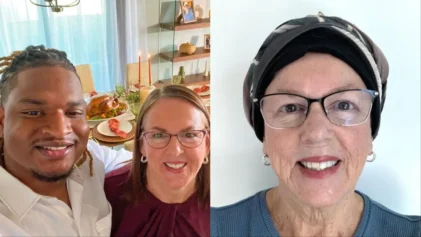Pseudofolliculitis barbae, more commonly referred to as “razor bumps”, is an extremely common condition affecting mostly the beard and neck areas. Studies have estimated that 45-83% of African American men are affected by this problem. However, it can be seen in anyone with curlier hair on the face. In addition, it can be seen in African American women that grow excessive hair on the beard and neck areas, as well.
Pseudofolliculitis barbae is an extremely aggravating problem, not just symptomatically, but also cosmetically, especially for men who need to keep their face clean-shaven because of work demands.
It can be caused by various different depilatory mechanisms, including shaving, tweezing, plucking, waxing, and electrolysis. The short hairs curl back into the skin and act as a foreign body. This leads to chronic inflammation and infection. Shaving against the grain and pulling the skin tight while shaving can exacerbate the condition.
Fortunately, there are ways to prevent this problem.
In general, if you can stop trying to get rid of the hair, even for up to 6 months; this can lead to significant improvement. Growing the beard out, typically leads to resolution. However, for many individuals this is not a viable option.
For these individuals, I recommend to avoid shaving for several weeks to one month or until all lesions have resolved, while applying a mild topical steroid or topical antibiotic to calm the lesions. If it is not possible to avoid shaving for that period of time, try increase the time in between shaves.
When shaving, trim the beard area with clippers or scissors to prevent a shave closer than 1 mm of hair. However, if a blade must be used, I would suggest applying a warm compress to the face for about 5 minutes to soften the hairs. Then apply a shaving gel that is lubricating. Do not stretch the skin, and shave with the grain of the hair. Only use one stroke over each area.
Other methods of hair removal or depilation, include chemical depilatory agents. More commonly known products include, Nair, Neet, and Magic Suave. They contain barium sulfide and calcium thioglycolate, which dissolve the hair follicles. Only use these when the skin is clear. Leave these on for less time than recommended as they can cause chemical burns.
Laser hair removal is the gold standard of treatment and yields complete resolution of the problem. It is highly recommended for women with pseudofolliculitis barbae, as well as men in the neck area, especially if they acquire keloids in the area.
There are various ways to treat the bumps. Typically I will give a mild topical steroid to use immediately after shaving. Active lesions can be treated with topical glycolic acid lotion, antibiotics (often combined with benzoyl peroxide), and retinoids to reduce the bumps. In moderate to severe cases, oral antibiotics may be warranted.
In summary, although extremely common, pseudofolliculitis barbae can be a constant nuisance. However, with education and proper treatment, it can be well managed and even cured.
Dr. Meena Singh is a board-certified dermatologist. She received her medical education at Harvard Medical School and dermatology training at the Mayo Clinic. She is currently in private practice in New York City. Her interests include ethnic skin and hair (also termed “skin of color”), hair loss, scarring or permanent hair loss, and hair restoration surgery or hair transplantation. She is currently performing clinical trials in laser hair stimulation, as well as projects on techniques used in hair transplantation for scarring and non-scarring forms of hair loss.


